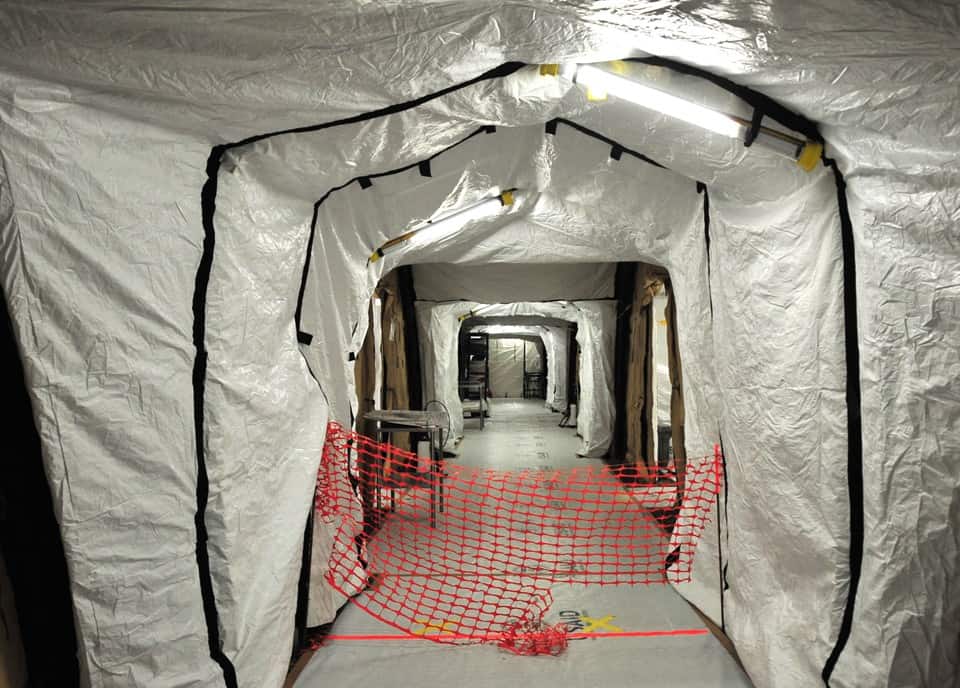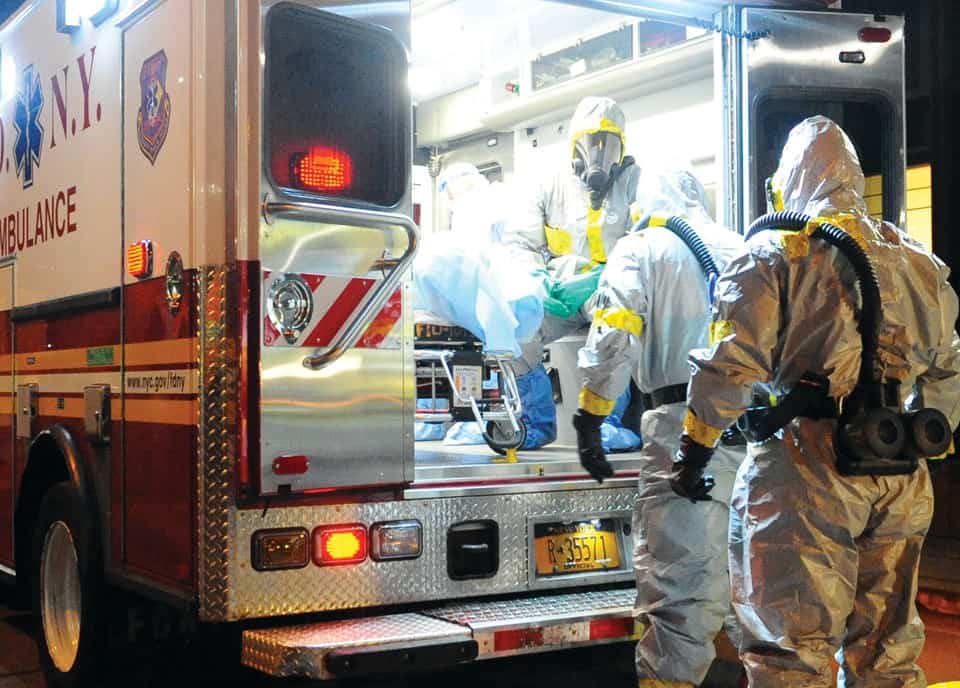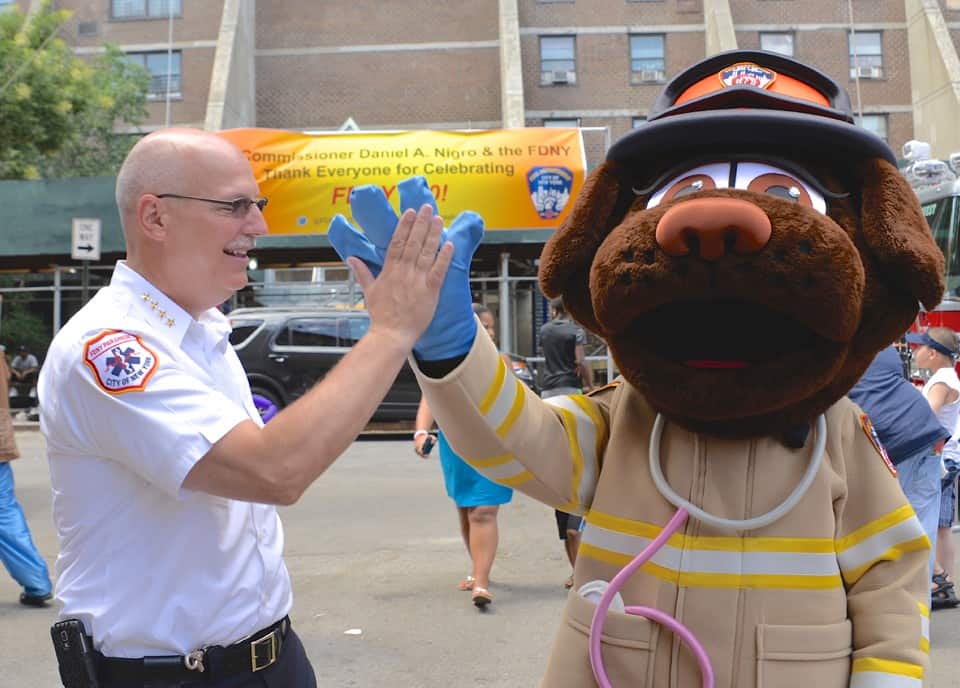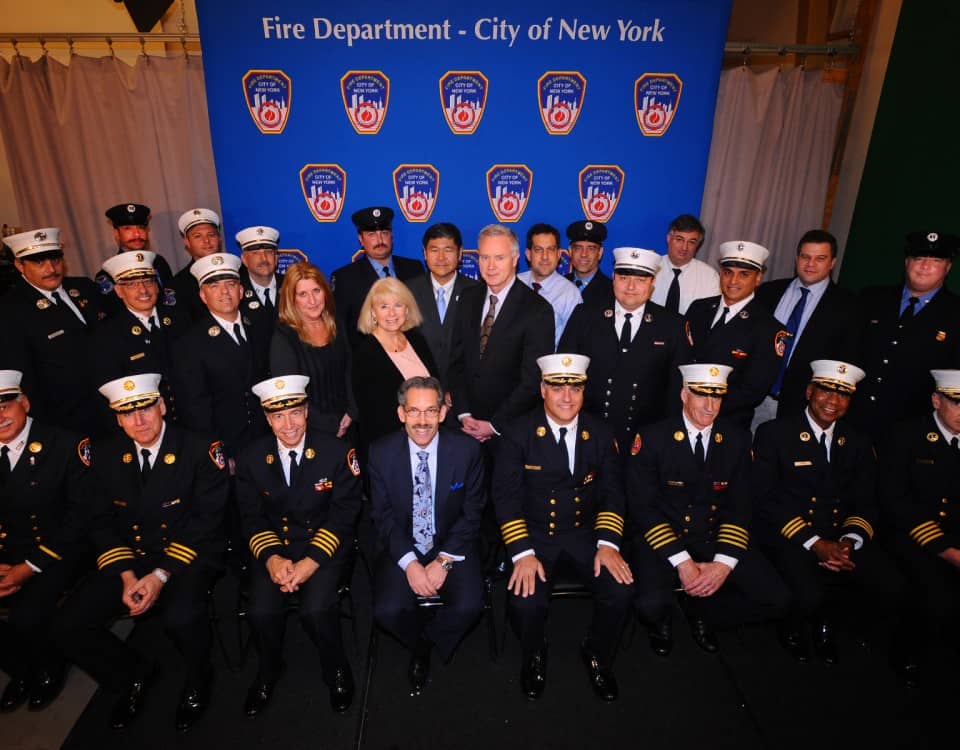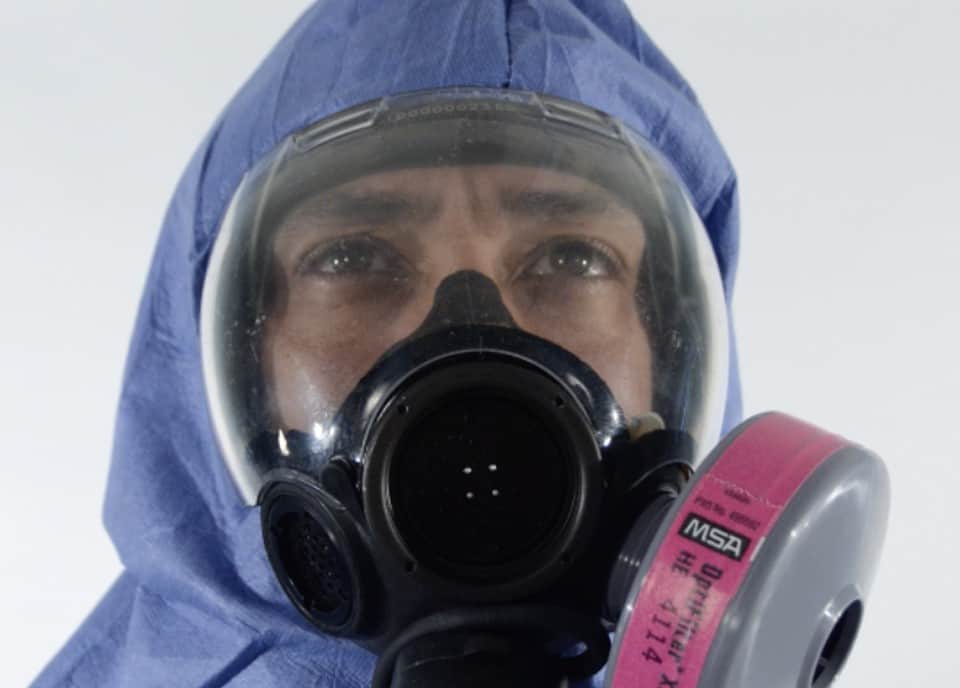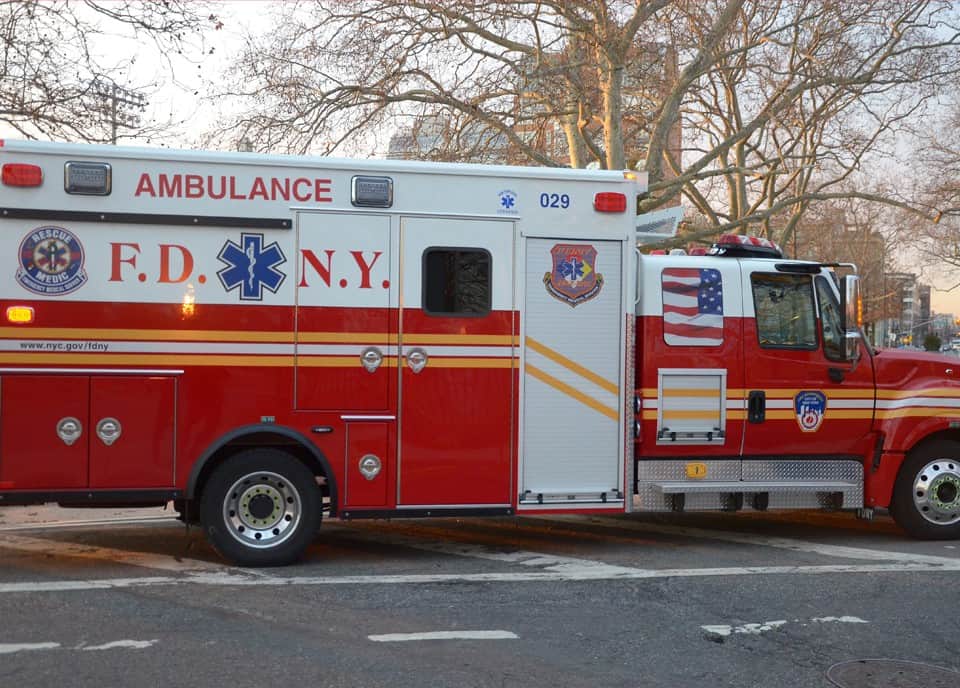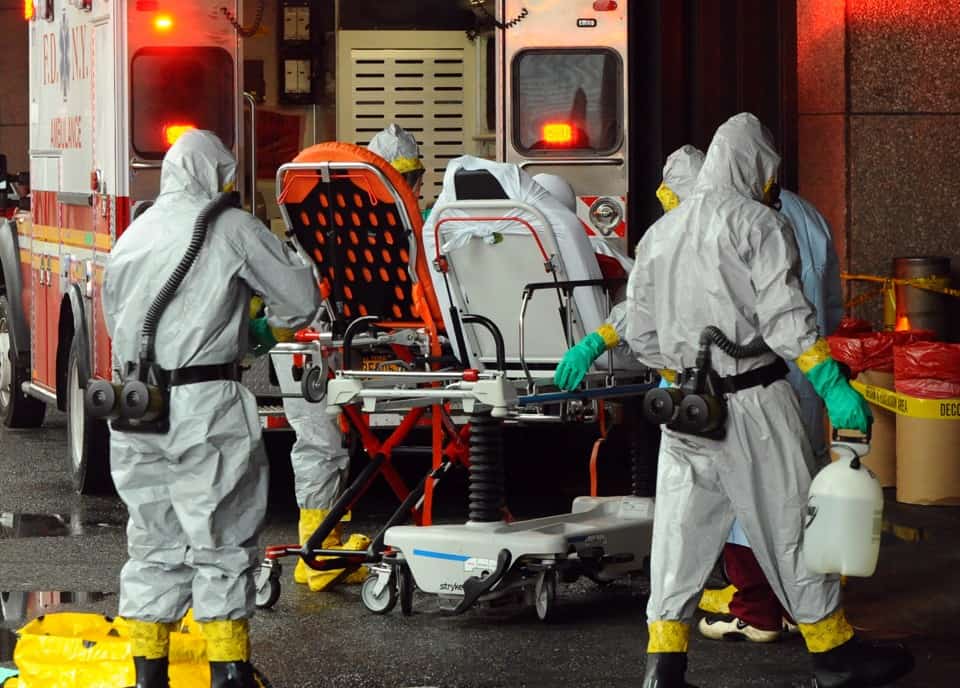When Haz-Tac EMS Paramedic Winsley Julien first got the call on October 23, 2014, that a patient in Hamilton Heights very likely had Ebola, the 15-year EMS veteran said he started to get a little nervous. “I took a deep breath, but then I knew we had the suits, so I would be okay,” he […]
EMS Division 1 Retirements/Terminal Leave Division 1–EMT Martin Fernandez (RCC), appointed 09/12/1988. Station 16–Lt. Pamela Hehn, appointed 08/13/1984. Station 16–Lt. Eartha Sedeniussen, appointed 07/01/1991. Station 16– December. Captain Cuevas and EMTs from Station 16 met with the children of P.S. 197 (Pre-K) for a show and tell and to speak about EMS and what to […]
In August 2014, Fire Commissioner Daniel A. Nigro formed a task force, under the direction of Chief Medical Officer Dr. David Prezant, to develop protocols for response, care and transport of patients with Ebola virus. Beginning in September 2014, FDNY responded to numerous cases and performed admirably despite the known life-threatening risk of contagion to […]
Accurate triage is the most critical component of any Emergency Medical Service (EMS) system. Miscommunications can prove detrimental to a good patient outcome. The assignment receiving dispatcher gathers the caller’s information, which then is consolidated into a useful format for the responding units. At the FDNY Bureau of Communications (BOC) Public Safety Answering Center (PSAC1). […]
Reviewing the proper procedure for donning and doffing infectious control ensembles is always a top priority for patient care providers. But, as the Department prepared for the potential spread of the Ebola Virus Disease (EVD), the need to ensure health and safety of members could be felt more acutely. The EMS Academy re-released long-standing procedures […]
The citizens of New York City know that when they call 911, the best-trained, most diligent medical professionals will arrive at their door. It is due to the attentiveness and organization of the Bureau of Fleet Services that these trained professionals have the ability to reach those callers in a timely and effective manner. Fleet […]
In October 2014, while operating as car 523, I was assigned to a multi-dwelling residence in Upper Manhattan, along with a Haz-Tac BLS, an ALS, one Conditions Officer and a Haz-Tac Officer. On arrival, I received a phone call from FDNY EMS Operations personnel, stating that the patient was a doctor who recently had returned […]
When Haz-Tac EMS Paramedic Winsley Julien first got the call on October 23, 2014, that a patient in Hamilton Heights very likely had Ebola, the 15-year EMS veteran said he started to get a little nervous. “I took a deep breath, but then I knew we had the suits, so I would be okay,” he […]
EMS Division 1 Retirements/Terminal Leave Division 1–EMT Martin Fernandez (RCC), appointed 09/12/1988. Station 16–Lt. Pamela Hehn, appointed 08/13/1984. Station 16–Lt. Eartha Sedeniussen, appointed 07/01/1991. Station 16– December. Captain Cuevas and EMTs from Station 16 met with the children of P.S. 197 (Pre-K) for a show and tell and to speak about EMS and what to […]
In August 2014, Fire Commissioner Daniel A. Nigro formed a task force, under the direction of Chief Medical Officer Dr. David Prezant, to develop protocols for response, care and transport of patients with Ebola virus. Beginning in September 2014, FDNY responded to numerous cases and performed admirably despite the known life-threatening risk of contagion to […]
Accurate triage is the most critical component of any Emergency Medical Service (EMS) system. Miscommunications can prove detrimental to a good patient outcome. The assignment receiving dispatcher gathers the caller’s information, which then is consolidated into a useful format for the responding units. At the FDNY Bureau of Communications (BOC) Public Safety Answering Center (PSAC1). […]
Reviewing the proper procedure for donning and doffing infectious control ensembles is always a top priority for patient care providers. But, as the Department prepared for the potential spread of the Ebola Virus Disease (EVD), the need to ensure health and safety of members could be felt more acutely. The EMS Academy re-released long-standing procedures […]
The citizens of New York City know that when they call 911, the best-trained, most diligent medical professionals will arrive at their door. It is due to the attentiveness and organization of the Bureau of Fleet Services that these trained professionals have the ability to reach those callers in a timely and effective manner. Fleet […]
In October 2014, while operating as car 523, I was assigned to a multi-dwelling residence in Upper Manhattan, along with a Haz-Tac BLS, an ALS, one Conditions Officer and a Haz-Tac Officer. On arrival, I received a phone call from FDNY EMS Operations personnel, stating that the patient was a doctor who recently had returned […]


